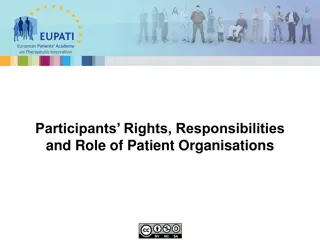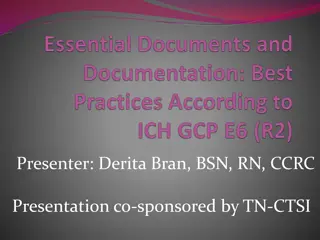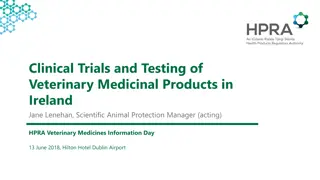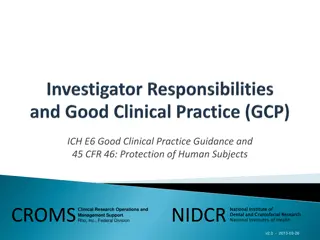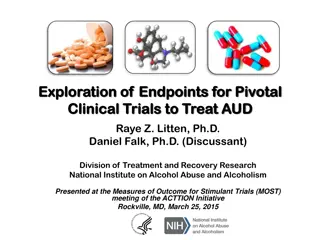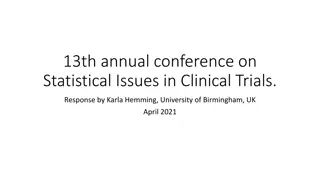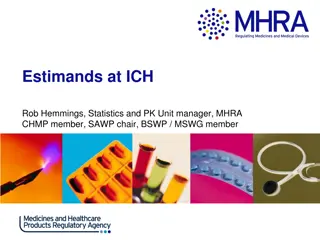
Ensuring Research Integrity in Clinical Trials
In discussions of standard of care interventions and baseline risks in research, it is crucial to clearly differentiate between research purposes and routine care to enhance participant understanding. The presentation highlights the importance of transparency in consent documents regarding procedures, alternatives, and baseline risks specific to different populations. Emphasizing the need for informed decision-making and ethical considerations in research settings.
Download Presentation

Please find below an Image/Link to download the presentation.
The content on the website is provided AS IS for your information and personal use only. It may not be sold, licensed, or shared on other websites without obtaining consent from the author. If you encounter any issues during the download, it is possible that the publisher has removed the file from their server.
You are allowed to download the files provided on this website for personal or commercial use, subject to the condition that they are used lawfully. All files are the property of their respective owners.
The content on the website is provided AS IS for your information and personal use only. It may not be sold, licensed, or shared on other websites without obtaining consent from the author.
E N D
Presentation Transcript
SLIDE 1 Peter Vasilenko, PhD
SLIDE 2 Standard of Care If we are going discuss research involving standard of care interventions We first need to do a better job of identifying in consent documents what is being done for research purposes and what is being done as part of standard of care. In many instances, physicians are considering clinical trials to be part of treatment. In addition, consent forms are weak on the specifics of alternative treatments. The IRB should consider whether the differentiation between standard care and research in the consent process and document is sufficient.
SLIDE 3 Standard of Care One suggestion is make a list of specific procedures: What would be done if I choose not to participate in the research (alternatives) Drug X What is being done for research purposes only What is being done as part of routine clinical care Drug Y Drug Z 2 X-rays 3 blood samples Food frequency questionnaire Depression test 3 office visits 1 X-ray 1 blood sample 1 X-ray 1 blood sample 1 office visit Annual follow-up exam 1 office visit Annual follow-up exam
SLIDE 4 Baseline Risk We need to consider the research risks in the context of the baseline risks of a population. For example, when research is conducted on prisoners, soldiers, or premature infants, the baseline risks are different than the general population and will undoubtedly impact outcome, with or without the research. Consent forms are weak on the specifics of baseline risks and putting the research risks in context. The IRB certainly needs to be aware of the baseline risks and consider them in their discussions and deliberations on risk. Subjects or parents of subjects should understand these baseline risks in order to understand the increased or decreased risks which the research may offer. This may be difficult to do when discussing mortality or serious illness.
Mortality Due to Prematurity Obstetrics and Gynecology 99(4):95S, 2002. 100 90 80 70 Percent of Births 60 50 40 30 20 10 0 15 20 25 30 35 40 45 Gestational Age



